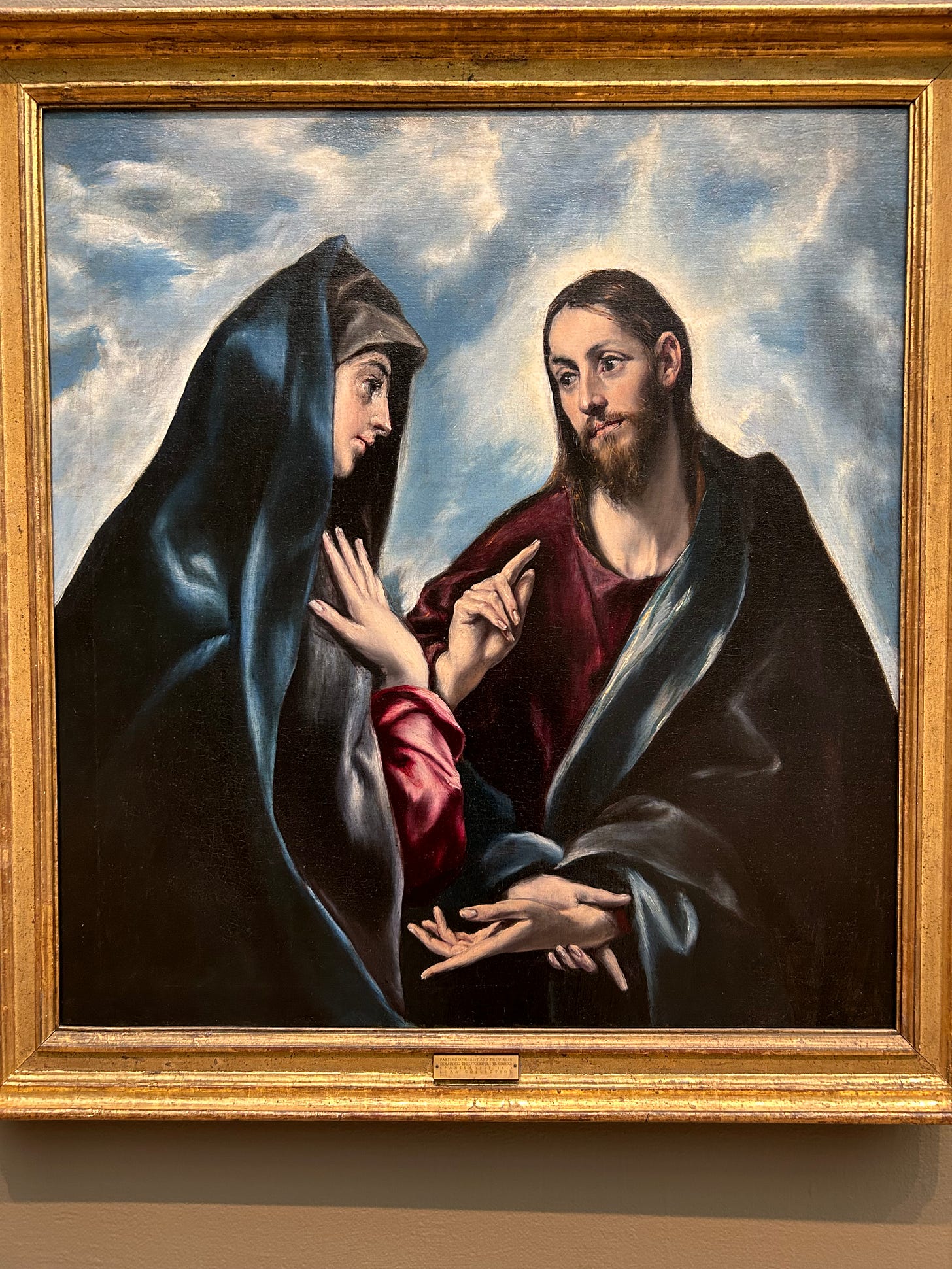Over twenty years ago, the art critic James Elkins wrote a remarkable book called Pictures and Tears: A History of People Who Have Cried in Front of Paintings.1 The book is part anthropology, part art criticism: a consideration of what pictures can do based on the testimonies of over 400 people who shared stories about crying in front of paintings.
I dipped back into Elkins’ book after my own experience with tears in a museum last week. I was on a solo trip to Chicago and visited the Art Institute. After spending some time in a Caravaggio exhibit (that I found underwhelming and a tad contrived), I enjoyed wandering the European halls rather aimlessly. This is not unfamiliar terrain, and revisiting galleries is an opportunity to be encountered afresh by something you’ve missed before. Or, rather: it is an opportunity to see something you haven’t seen before because the you that was looking in the past wasn’t available in just the way you might be today.
I have no doubt that I’ve seen this El Greco before. I never miss an opportunity to track down paintings by one of my favorites. Why, on this day, did I quietly dissolve in tears in front of it?
The answer to the question is probably: Who knows? What swirl of emotion already attended me as I stepped into the room? Could it be simply be the fact that my empty-nester heart daily misses our kids who have moved away, and so I feel Mary’s pain as a mother?2 Did Mary have to keep saying, “Let it be” over and over and over again, letting go of dreams all the way to the foot of the cross?
Or was it the brimming eyes of my incarnate God? This deeply human reminder that the God who came near in Jesus is the God that moves towards the world’s pain and suffering, even when it meant breaking his mother’s heart?
All I know is that Mary’s hand tenderly clasping Jesus’ wrist (Don’t go) clenched itself around my heart. I sat with the painting for a long time. Eventually, since the painting immediately brought it to mind, I listened to Patty Griffin’s elegiac “Mary” while schoolchildren on field trips swirled about. I dwelt in the painting’s blues & crimsons and wept without knowing exactly why.
If you’re unfamiliar with Elkins, get a taste of his critical sensibility in this marvelous conversation with my friend, Jonathan Anderson, in Image: “The Strange Persistence of Religion in Contemporary Art.”
Or, to ask the question with the poet Albert Goldbarth, “Is it sentimental?




